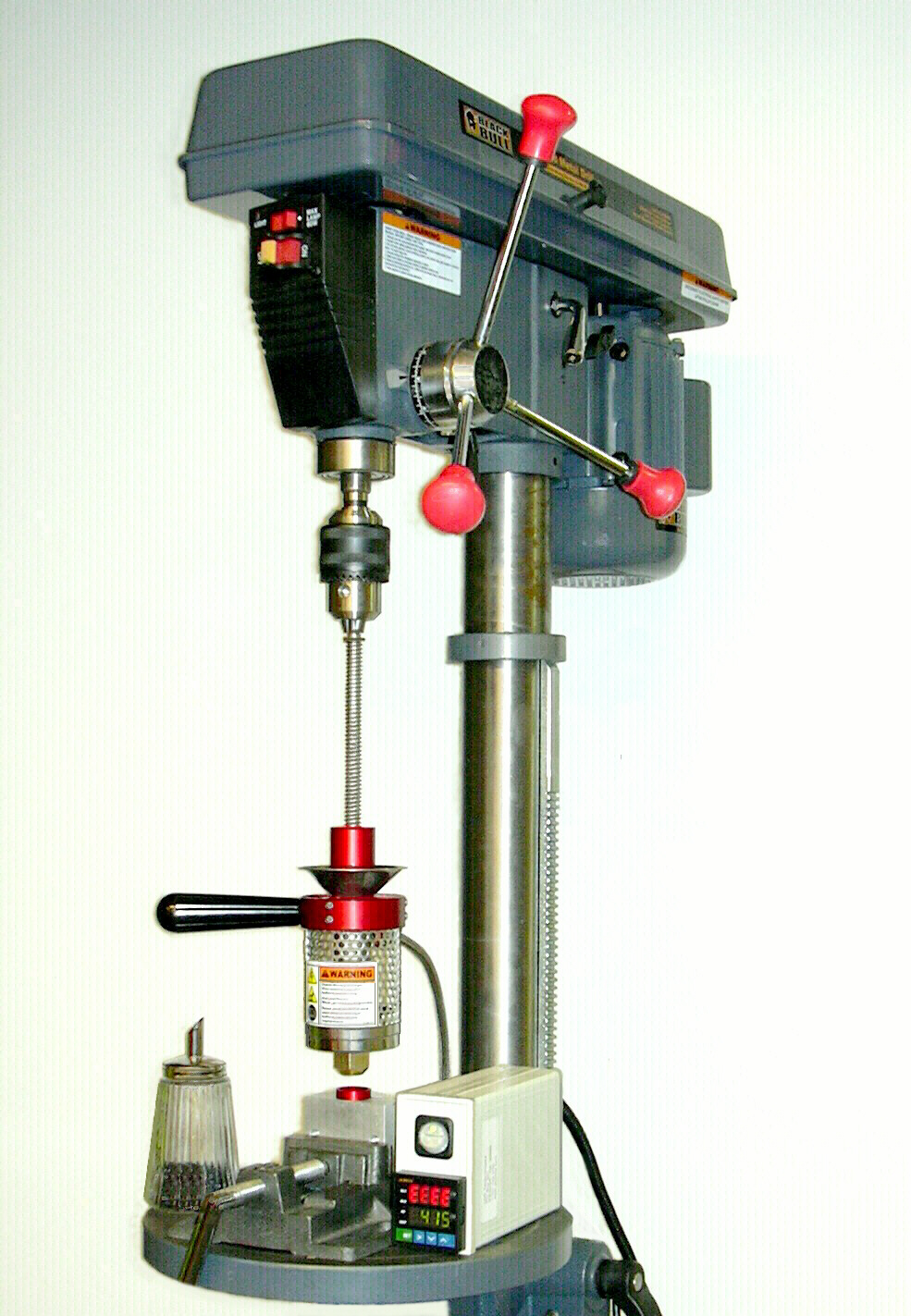
http://www.techkits.com/pim/index.htm
Reminds me of an updated 1960s era toy called a Kenner Mold Master


http://www.techkits.com/pim/index.htm
Reminds me of an updated 1960s era toy called a Kenner Mold Master

Interesting - I didn’t know these things even existed, here’s another that looks a bit more “workman like” has a larger die & can do polystyrene - it obviously costs more though;
!(http://www.injectionmolder.net/Model-A side view-003.jpg)
Interesting !
While I’d have no use for such equipment, I have to wonder how large a mold it can reliably work… looks like it do small size stuff.
Cool looking peice of machine…afraid it would be hard to smuggle into my man cave though
No problem…tell her it’s a juicer…
Ohhh good idea
[Y]

I think that making the actual mold will probably be the hardest part…
That Galomb, Inc. model has an on-line guide for making molds-
http://www.injectionmolder.net/image_gallery.htm
http://www.injectionmolder.net/moldmaking.htm
http://www.injectionmolder.net/epoxy%20molds-step_%20by_%20step.htm
and pre-cut mold frames are available
http://www.injectionmolder.net/accessories.htm
Not exactly cheap- machine is $1,595 plus cost of accessories.
OTOH, if somebody can afford to spend $1,400 on kits…maybe owning a machine capable of making a lot of real, plastic parts might be worth it.
Especially if the detail parts aren’t available anywhere else and the owner is skilled enough to make the prototype parts.
I appreciate that the making the molds may be problematic (less so with resin ones), but it’s got me wondering why nobody out there is using this type of thing to do something comparable to resin accessories / extras but in styrene?
I know less than nothing about the whole resin accessory parts thing, but there seem to be plenty companies out there making the stuff - I realise the mould capacity of these particular machines is slightly limiting, but would a comparable accessory / extra in styrene not be preferable to resin?
From what I’ve read, the molds used to make resin parts don’t last indefinitely ( I believe due to heat created when the resin parts cure ).
I would presume a styrene part would be preferred by model builders over resin if part cost were close.
I’d like to know how companies such as Verlinden produce large numbers of resin parts.
Good question! Maybe they use metal molds instead of RTV. Maybe they make several mold copies and toss them when they wear out? I guess we could ask someone at Verlinden …(?)…
Hey,GOOSE ! That is a very interesting thingy. Now , who do I get to make the molds I need and how big a mold can it handle? I ask this, because if I spend what I still owe on my 73 KIA then I better be able to make sure I can use it , right? And it will fit in the van too. Thank you for sharing. tankerbuilder
Actually, I usually prefer resin parts. The urethane casting resin used today has a very low surface tension that reproduces fine detail very nicely.
And a scratch builder or detailer using resin for casting usually does not need a super-large number of parts. When I make a mold for something where I need a dozen or more copies I do it in two steps. First master, one pattern, make three or four parts from that mold. Then lay out a new mold with those parts used as patterns in a new three or four cavity mold. I have never needed more than about fifteen parts for a model. I have never had a mold go bad casting parts for a single model.
The beauties of resin casting include the fine detail I mentioned above, the fact that patterns and molds are quite easy to make, and because the molds are flexible, no mold relief angle is necessary. One can cast true right angles not possible in styrene injection molding.
Actually, the company has a web page listing price and size of the aluminum basic mold “blanks”.
http://www.injectionmolder.net/order_items.htm
as well as specifications for the machine.
http://www.injectionmolder.net/specifications.htm
Not cheap, but the machine is really meant for use by a small company not an individual.
And the Model 20A specifications are here:
!(http://www.premierplasticsnj.com/images/Boy 22 ton.JPG)
1997 22 ton Boy Injection Molding Machine, 54,000 hours.